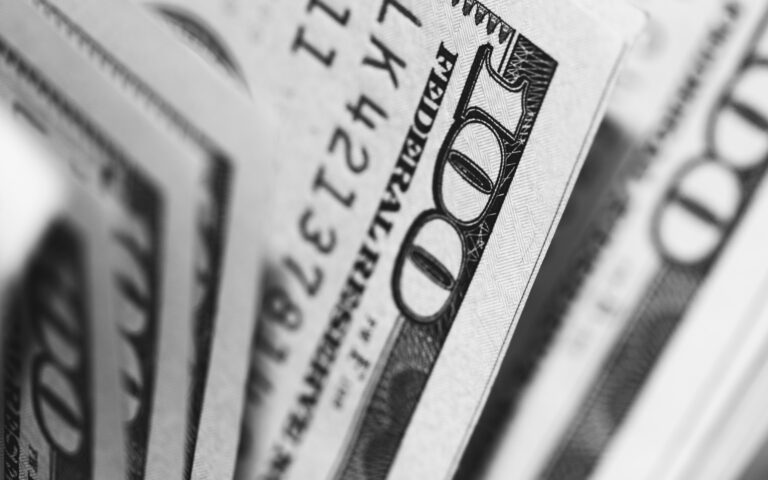
US Inflation and Monetary Policy
Discussion and Analysis By Charles Porter:
Last week’s inflation data within the United States was strong, yet underwhelming. It has led to significant speculation on the US Dollar given the significance of the rate of inflation to currency markets. When the data was released, the US Dollar spooked significantly, losing 0.4% of its value against the Euro instantaneously, demonstrated in the graph below.

The international economic calendar has been littered with speeches and comments by central bank members over the past couple of weeks. The position of central banks that are of global systemic significance, the Bank of England, the US Federal Reserve and the European Central Bank, should therefore be clear. However, market confidence and consensus on any central bank’s preferred path of action is weak, at best.
The reason for this is a surplus of conditionality within central bank speeches: “it depends”; “we’ll see”; “if… then”. The most prevalent theme coming from governors and committee members alike is that future data will, almost exclusively, determine the path of monetary policy. Forward guidance, the method of choice for many central banks that seeks to inform and guide the market through monetary policy over the medium run, breaks down under such conditions.
Therefore, the sensitivity of currency markets, a market that is highly dependent upon monetary policy, is heightened during times of uncertain monetary governance, particularly around key data releases. The mandate of central banks primarily, although not always exclusively, revolves around the price level; the rate of inflation within an economy. Therefore, a direct reading or estimation of the price level will hold the most market moving potential with indicators that typically influence the domestic price level coming in at a close second.
Friday afternoon saw the release of the latest Consumer Price Index, the favoured instrument to measure the rate of inflation. The higher that inflation creeps over target, the more the pressure mounts upon a central bank to increase interest rates either reactively or preventatively. An interest rate hike in turn, by definition, promises investors a greater return upon their investment. As we anticipate a gradual and fragile emergence from abnormal, hyper-loose, global monetary conditions, then there will be an added currency benefit. The pecuniary benefit will unilaterally strengthen the domestic currency, in this case the US Dollar, because of a renewed confidence in the capacity of the economy.
Therefore, when the aforementioned data sensitivity produces an effect that makes an interest rate hike less likely, movements within currency markets manifest as greater downside than the underlying data may warrant. Below-consensus CPI inflation data is a case in point. The September year on year inflation data released last week still stood at above the median target of 2%. In fact, the Bureau of Labour Statistics reported that aggregate inflation stood at 2.2% percent, up a seasonally adjusted 0.5% in September alone.
Indicatively, without an analysis of the underlying dynamics of inflation, the headline figure of 2.2% is sufficiently high to facilitate an interest rate hike soon, in accordance with Yellen’s, and her Committee’s, suggestions. With the meeting of the Federal Open Market Committee, the US independent body responsible for setting monetary policy, fast approaching at the beginning of November, data releases between now and then will prove to be increasingly critical. Monetary stimulus tapering has already begun with the curtailment of quantitative easing stimulus this month. Another signal that the US is ready for a harder, interest rate led, monetary policy tightening will be highly fortuitous for the US Dollar.
Related Insights

Daily Brief – Big Girls Don’t Cry
Big Girls Don’t Cry A bond market tantrum and one of the sharpest one day sell offs in Sterling for several years appear to have been catalysed by the Chancellor’s appearance in PMQs yesterday. First: the back story. This Labour government has faced some embarrassment in recent weeks trying to get its welfare bill through […]

Daily Brief – Weren’t Tariffs USD Negative?
Weren’t Tariffs USD Negative? The Dollar proved sensitive to headlines regarding trade during the US overnight session. However, contrary to what many commentaries would have you believe, as the risk of tariffs escalated the Dollar rose. The 90-day pause following Trump’s April ‘liberation day’ tariffs had been set to expire this coming Wednesday. To the […]

Daily Brief – A weaker Dollar: Trump vs. Powell
A weaker Dollar: Trump vs. Powell The Dollar continued to lose ground yesterday as the truce between Israel and Iran appeared to continue to hold. There has been a noticeable return to focus upon macro and monetary influences in major currency pairs. Yesterday, Fed Chair Jay Powell provided his semi-annual monetary policy report before the […]


 Charles Porter
Charles Porter